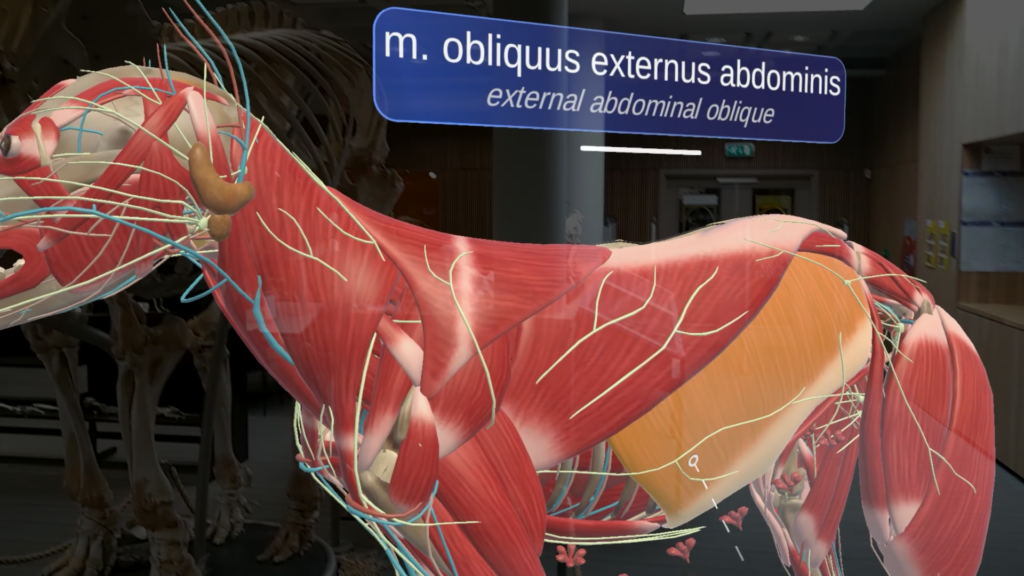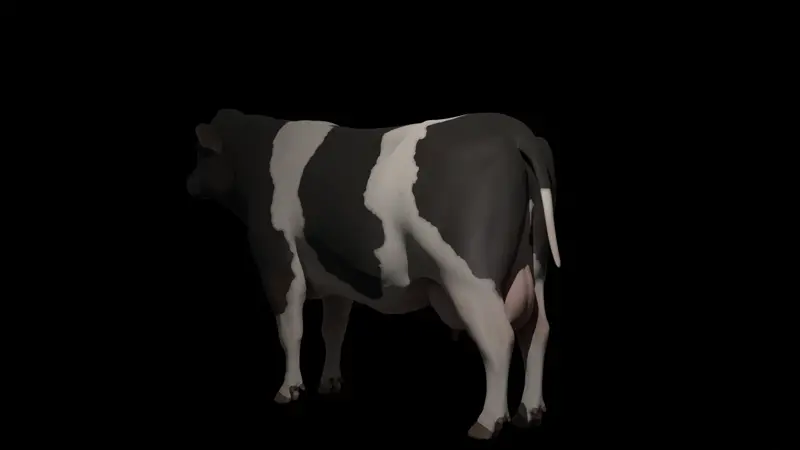History
AvatarZOO was founded by Beerend Hierck and Daniela Salvatori in 2022 at the Department of Anatomy and Physiology of the Veterinary Medicine faculty of Utrecht University. It began with a single model of a rat in the HoloLens-1 and evolved into an XR learning platform with interactive anatomy models of various animal species.

Mission
In AvatarZOO state-of-the-art research data on effective spatial knowledge acquisition is combined with grounded principles of interactive, collaborative, experiential, and embodied learning. It is based on eXtended Reality (XR) technology in which you meet a fully interactive anatomy model in your own physical learning environment (augmented reality principle). There are various ways to interact with the model: you can grab e.g. a muscle and drag it away to reveal the underlying structures, you can use the menu to select and hide structures, or you can ask the model to remove e.g. all muscles (voice command). The names of all muscles, bones, blood vessels, organs, and other structures are revealed by pointing them out, and you can navigate yourself around the model to explore hidden structures.

Some of our models have been adapted to train clinical procedures. This technology is still being beta-tested and is subject to experimental research into the efficacy of training in XR. We value this new technology since it can help to improve animal welfare, reduce the number of experimental animals used for education, and improve self-efficacy in our student population.
Team
AvatarZOO is being developed by a local team of experts: an educational innovation expert, various veterinary anatomy experts, teachers, developers, and a 3D-modeling expert. In this way, we can make sure that our high anatomy standards meet our educational standards.
Features
AvatarZOO is packed with features that allow for effective interaction with the models. All these features have been developed using evidence-informed strategies. This means that they are based on, or support, methods that have been demonstrated to improve learning. Learn about the various features by clicking on the button.

Navigation
The foundation of Embodied Cognition is that congruent movements of your body stimulate learning and automation. In AvatarZOO you navigate yourself around the model to facilitate spatial knowledge acquisition.


Repositioning

You can reposition the model at any time during your learning session by placing the model e.g. on the ground or at a convenient height. This adds to the immersive feeling and facilitates a personalized experience.

Highlighting
The point-and-highlight function helps to identify and select the right structure.


Labels

Labels help to identify the correct structure, link the regular to the scientific name, and easily memorize naming conventions.

Controls
Various controls help you to interact with the model. They vary from voice commands to the use of permanent or temporary menus.


Animations

Dynamic images help to learn about organ systems’ function physiology aspects. In AvatarZOO you can e.g. lift the cow tail by grabbing the tail like you would in a living cow.

Procedures
Clinical procedures can be trained in XR within the context of AvatarZOO. We are currently working on training injection techniques and spaying/castration techniques. These functions are currently in development and not yet available in AvatarZOO.
